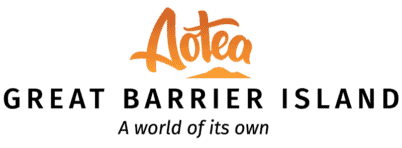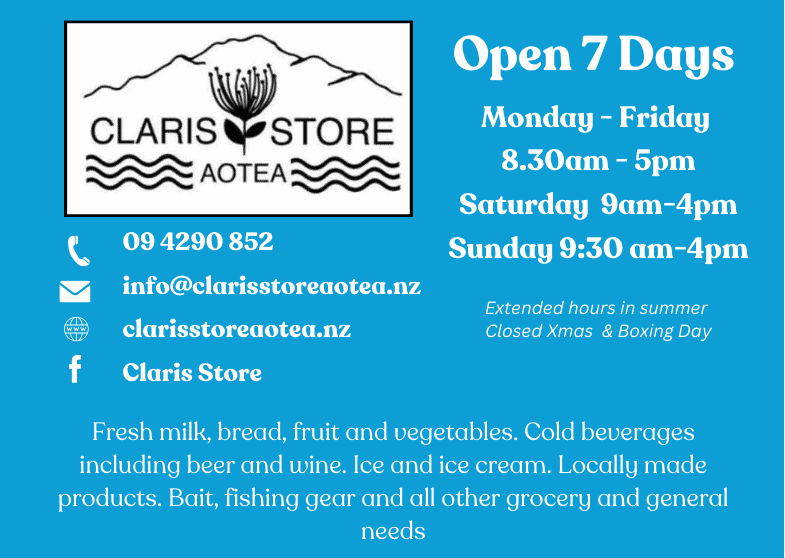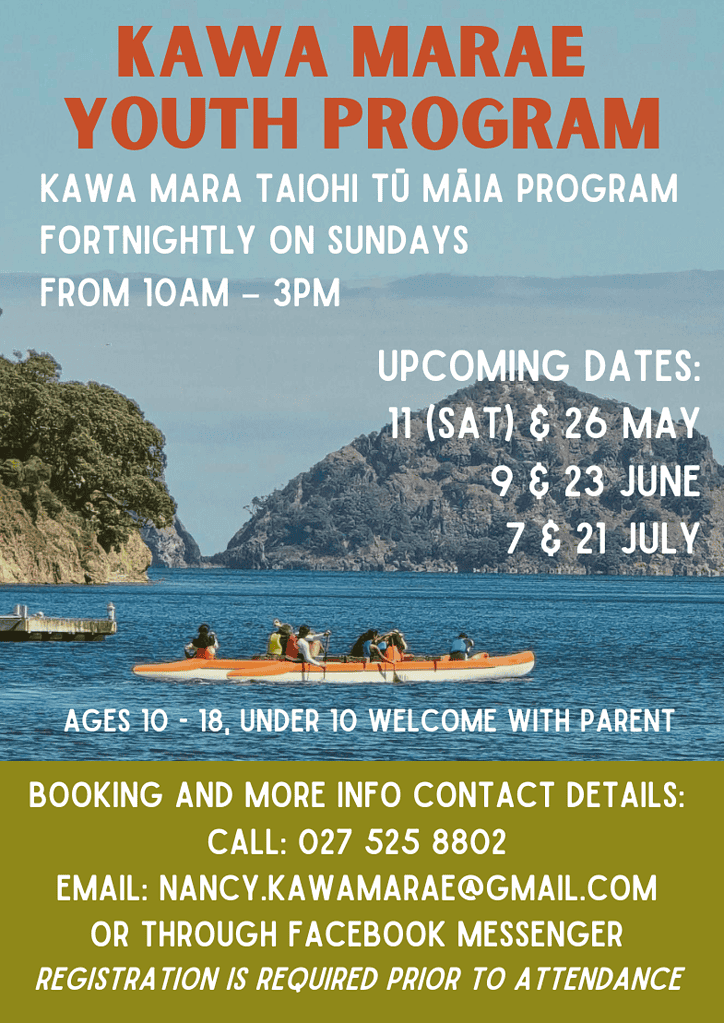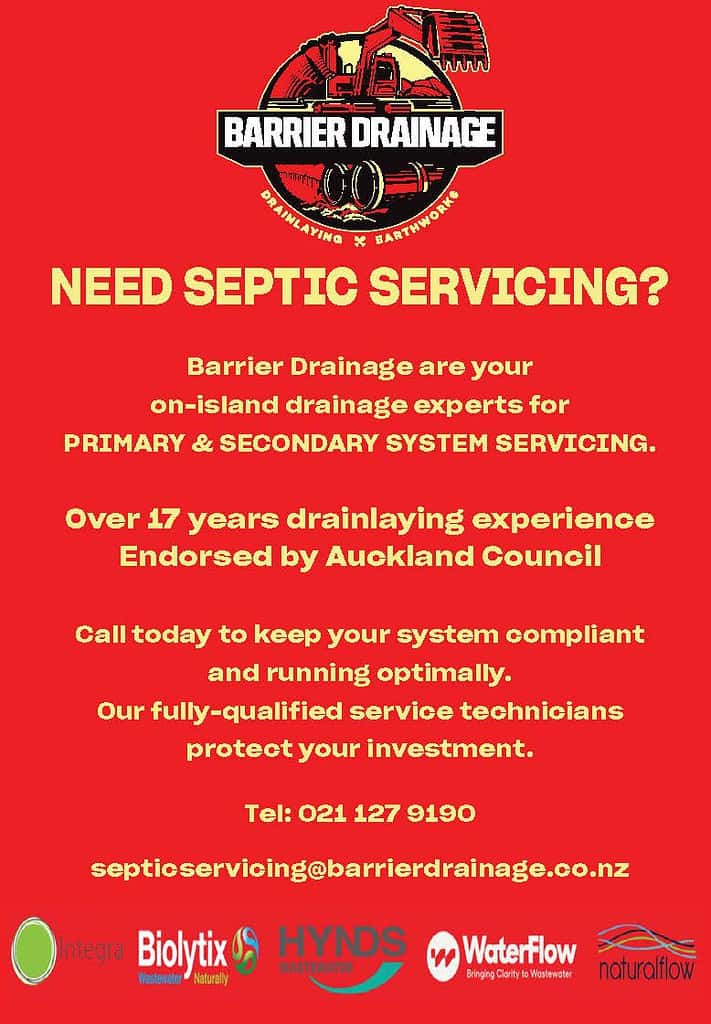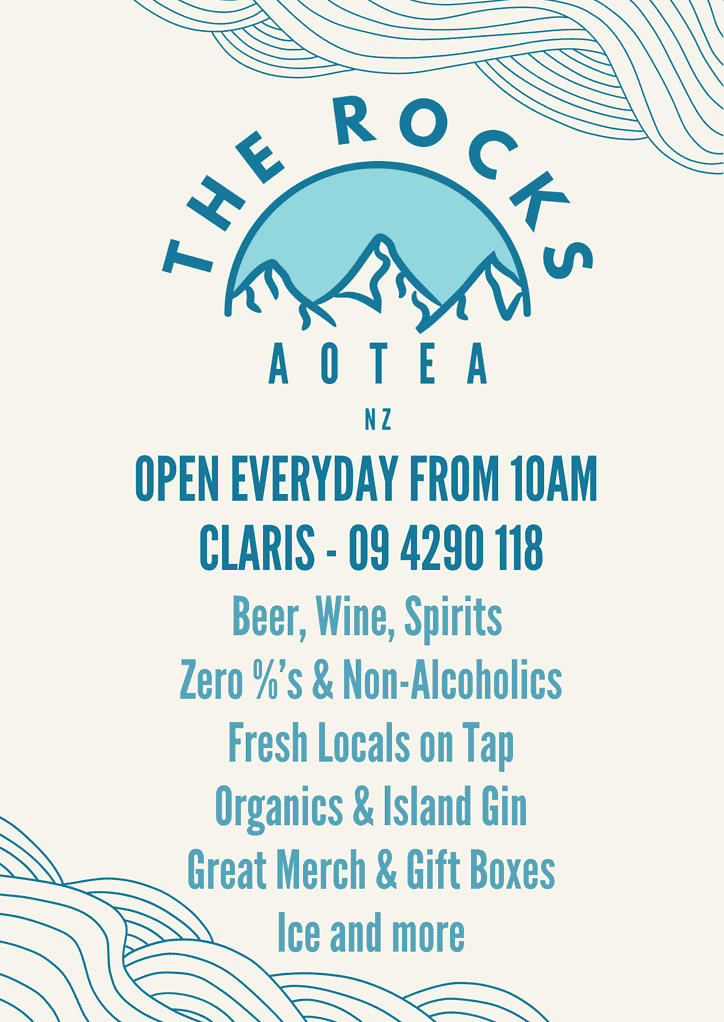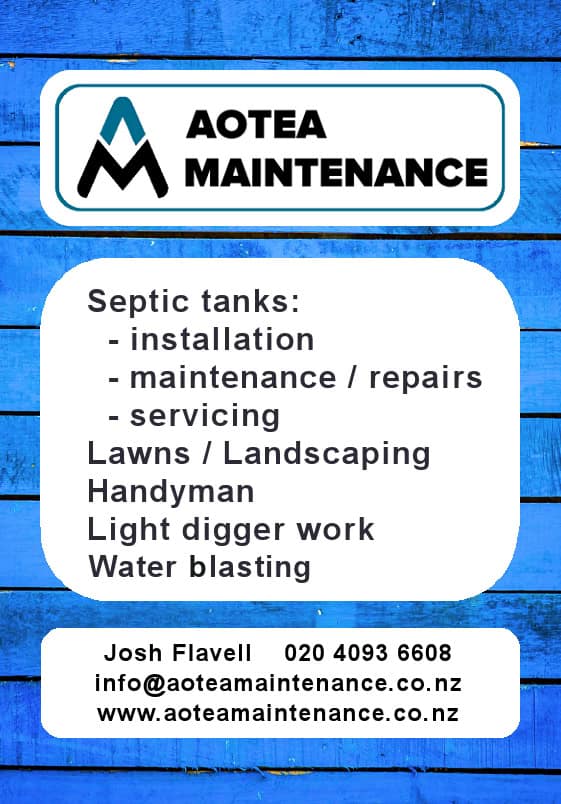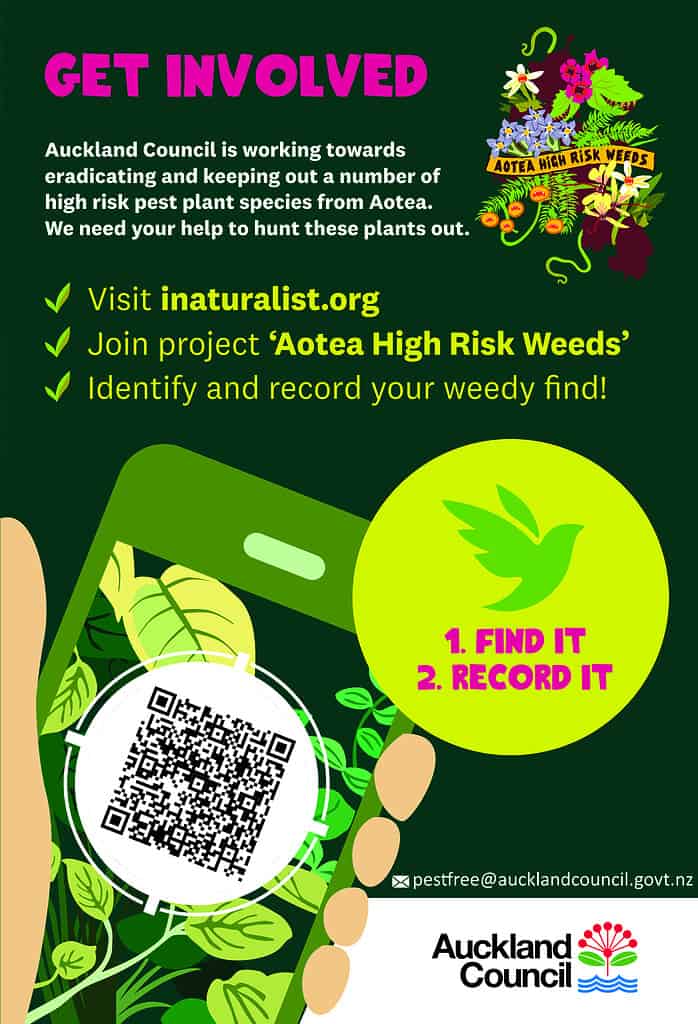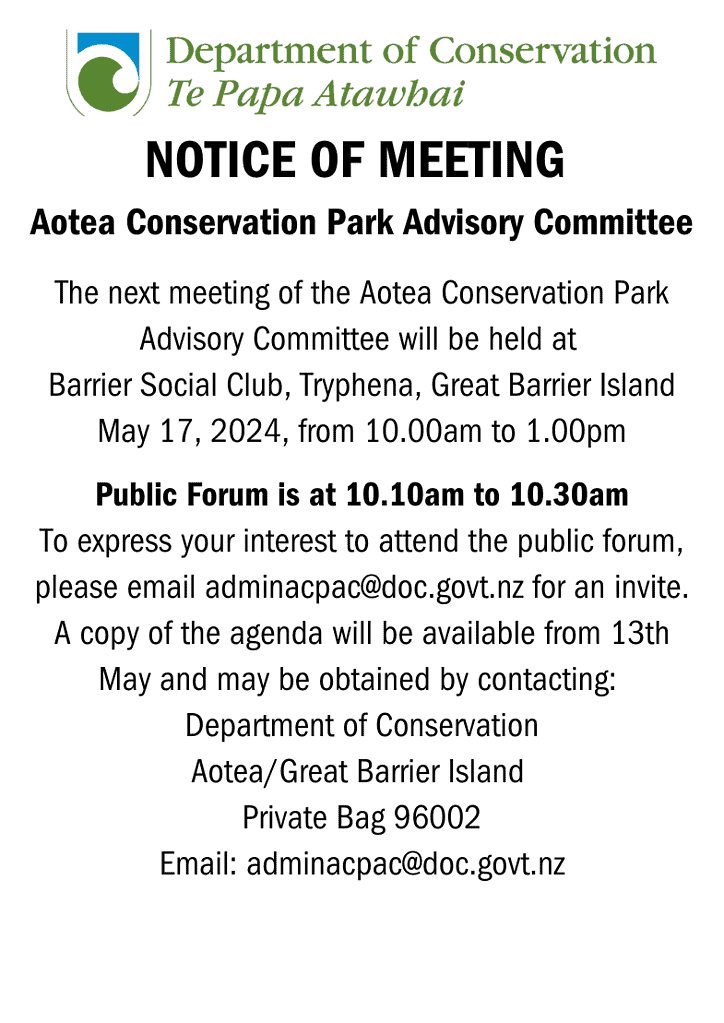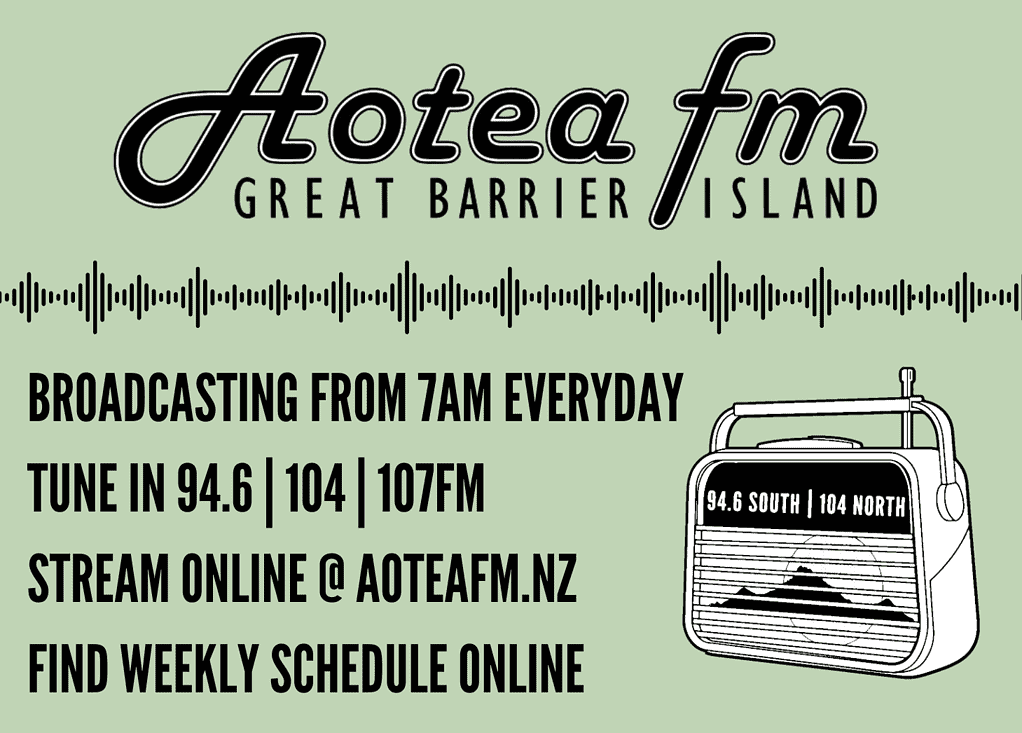A new steering team has been established, led by Ngāti Rehua Ngātiwai ki Aotea, to oversee and coordinate the response to exotic caulerpa seaweed on Aotea Great Barrier Island.
The Aotea Caulerpa Response Team (ACRT) wants to drive action in the water to stop the spread of exotic caulerpa around Aotea. It is a point of coordination for the community, working with Auckland Council, MPI, DOC and other exotic caulerpa sites for the response on Aotea, after the dissolution of the previous Caulerpa Committee. The steering team is made up of four mana whenua members and four community members (with representatives from Aotea Great Barrier Local Board and Aotea Great Barrier Environmental Trust) and has its work cut out.
Unfortunately, exotic caulerpa has now been confirmed at the Mokohinau Islands after a University of Auckland dive team conducting fish surveys reported sightings to MPI late-April. A Department of Conservation specialist dive team will be based at Port Fitzroy in May and with local support will confirm the exact locations of exotic caulerpa patches so that treatment can begin. It’s likely that boats have spread caulerpa to the islands on anchors as it is too far for caulerpa fragments to drift.
“It’s critical that we learn from the last 3 years and take action to eliminate these patches as soon as possible,” says Opo Ngawaka, Chair of the Ngāti Rehua Ngātiwai ki Aotea Trust and member of the steering team.
This new find highlights just why it is so important to control the spread of exotic caulerpa around Aotea, and why the ACRT wants to secure funding for an Aotea based operation. This group will need to be able to carry out underwater surveys to detect and confirm exotic caulerpa sites and to treat or remove it once it is found. Treatment tools include hand removal for small patches, covering it with light-proof matting, and suction dredging to remove it from the sea floor entirely.
The Steering Team & Funding
The new steering team is co-chaired by Fletcher Beazley and Chris Ollivier. Chris is well known as a member of the Aotea Great Barrier Local Board and operator of fishing charter business Hooked-on Barrier. Fletcher Beazley is a trustee of Ngāti Rehua Ngātiwai ki Aotea Trust. He works as a government contracts manager and is committed to the kaupapa.
In February $5m in national funding to fight exotic caulerpa was announced, of which, $200,000 has been allocated to a “perimeter control” project on Aotea. This work will get underway in the Port Abercrombie area In mid-May. The announcement followed sustained pressure from community and iwi in exotic caulerpa sites for a faster and more comprehensive response from MPI to the risks.
”It is a drop in the ocean in terms of what we need here to stop this pest,” says Chris of the perimeter trial. The Steering Team is seeking a meeting with the Minister or Primary Industries which is the lead agency for the exotic caulerpa response to discuss its proposed approach and funding. “We need long term support to set up the teams that can do the surveillance and control work day in day out, and protect our coast from its effects,” he says.
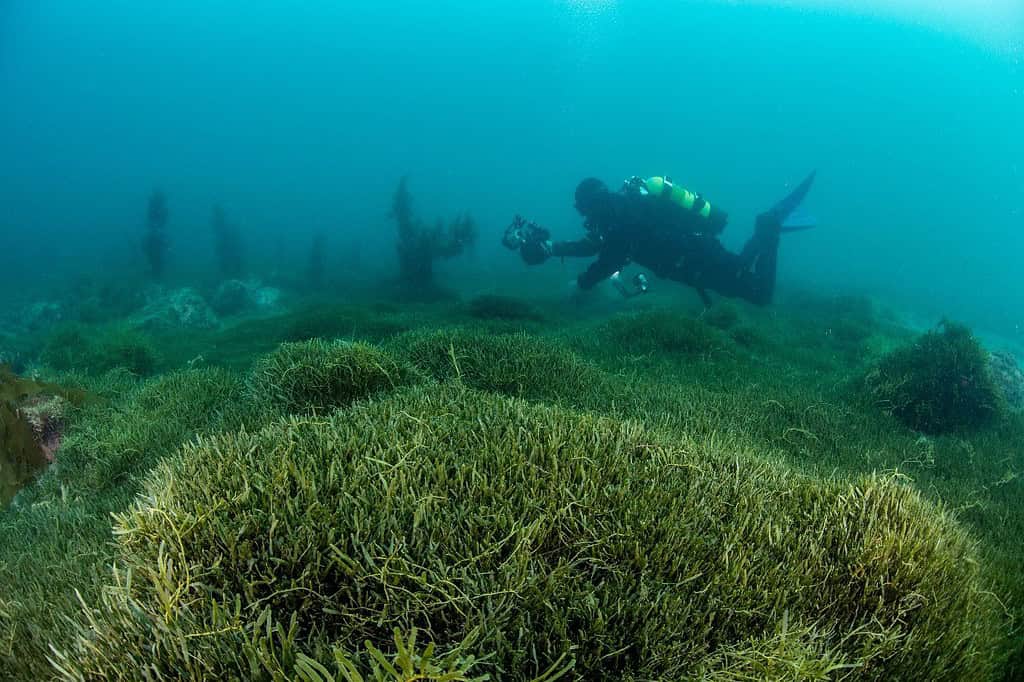
Survey Status
NIWA surveys of 18 sample sites off the west coast of Aotea confirm that the existing infestations are growing, and that scallops and crayfish have completely disappeared in affected areas. It grows on rocky and sandy substrates and has been reported as deep as 38m. Ahu Moana monitoring at Schooner Bay suggests it doesn’t do well under healthy kelp forests but will quickly take over sandy areas and kina barrens.
But of most concern is what is happening to the established exotic caulerpa masses off Okupe. Scientist Barry Scott is a member of the ACRT and has been collating all the science available to date. “It’s like astroturf when it gets away,” he says. He thinks that currents are very likely spreading loose fragments of exotic caulerpa and “tumbleweeds”, large balls of the seaweed that break loose from the sea floor have been reported. “It’s so important that we find new patches and treat them before they have a chance to form mats, it’s the only way we’ll stop it spreading,” he says.
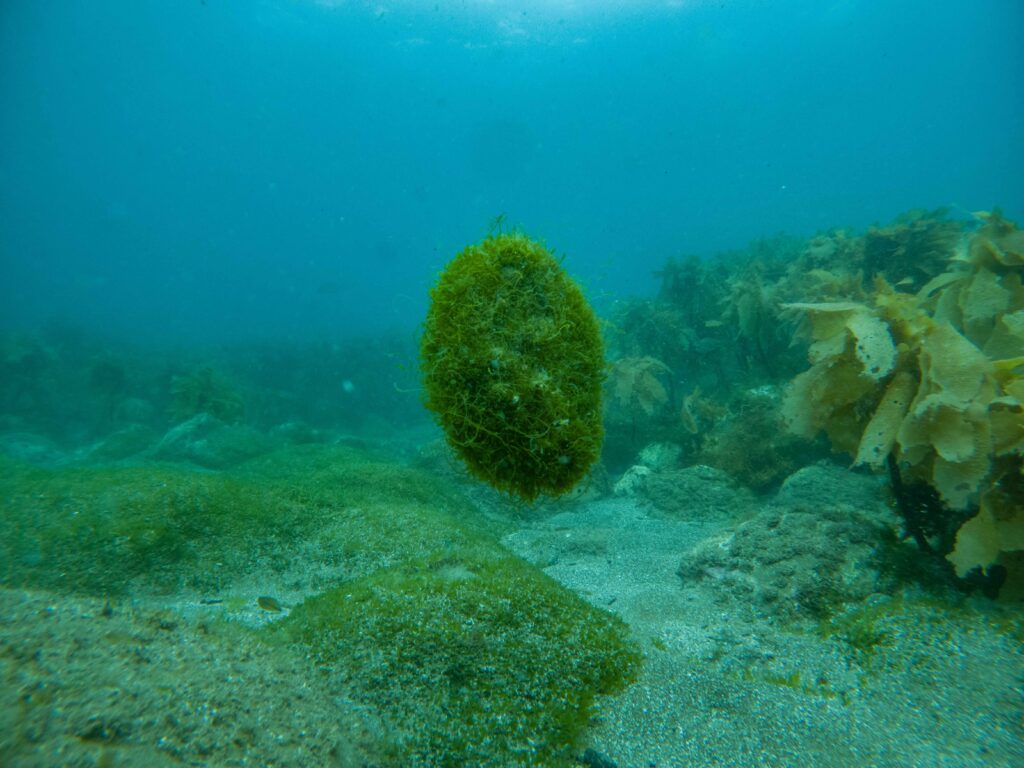
Some in the community have already said they think it’s too late and it’s time to throw in the towel on caulerpa. Others say we just have to learn to live with it. “We don’t think that is acceptable,” says Chris, and Barry agrees. “Living with it means accepting the loss of inshore scallop beds, shellfish and kōura habitat, and big drops in fish abundance if overseas data is any indication. Is that really what people want?”
The Impact
The economic impact of caulerpa has the potential to be very significant for the north of New Zealand and Aotea is feeling the greatest effects. Three years of caulerpa restrictions has come on top of a lengthy pause in boat-based visitors through the COVID pandemic and the terrible La Niña summer of 2023/24 which kept boaties away from the island. Barrier businesses are heavily reliant on summer trade and the anchoring restrictions have hit some local businesses hard.
In response, the Aotea Great Barrier Local Board is working on increasing the number of public moorings available in harbours, and the ACRT will prioritise detailed surveillance of Tryphena and Whangaparapara when local resources come on stream. This means sourcing underwater drones (ROVs) and training local crews in ROV use to spot and map the precise locations of caulerpa beds in those places.
Two Species of Caulerpa
Worth remembering is that Aotea has two species—the highly invasive and densely growing Caulerpa brachypus, and the less invasive Caulerpa parvifolia, also at Waiheke, Kawau and Ahu Ahu/Great Mercury. Until the discovery at the Mokohinau Islands, Omakiwi Cove in the Bay of Islands was the only other location with Caulerpa brachypus. At Omakiwi a trial larger than the one undertaken in Tryphena in September 2023 is now underway and using a different tool. That tool and others in testing may be able to be used on Aotea in the future.
Caulerpa brachypus is dangerous and it’s one reason why offers of assistance have been coming in from other iwi, marine scientists and divers. And now is the time—monitoring suggests that exotic caulerpa grows more slowly in cooler waters and winter provides a window for control. The ACRT aims to get local surveillance crews in the water to locate new patches and develop a control plan for these, as well as removing caulerpa from all the island’s harbours.
“We have to get set up to control the spread here,” says Chris. “Once you’ve seen what it does to the sea floor you won’t want that in your harbour or bay.”
For more information please contact the Aotea Caulerpa Response Team:
Email: info@acrt.co.nz
Phone: 021 470 401
Important Information – Responsible Boating & Reporting Sightings
- Boat owners can help control the spread of Caulerpa by observing the anchoring restrictions: : https://www.mpi.govt.nz/biosecurity/exotic-pests-and-diseases-in-new-zealand/pests-and-diseases-under-response/exotic-caulerpa-seaweeds-caulerpa-brachypus-and-caulerpa-parvifolia-in-new-zealand/. If you do find Caulerpa on your anchor or fishing gear, following the advice to dispose of it in a securely closed plastic bag to landfill.
- If you think you have seen exotic caulerpa in the water or you find it washed up on the beach please report it to MPI: https://report.mpi.govt.nz/pest/ (or freephone 0800 80 99 66).
- To report a boat anchored inside the restricted area please email info@acrt.co.nz or phone/text 021 470 401 with the location and a photo if possible.
Words by Caulerpa Response Team, 6 May 2024
